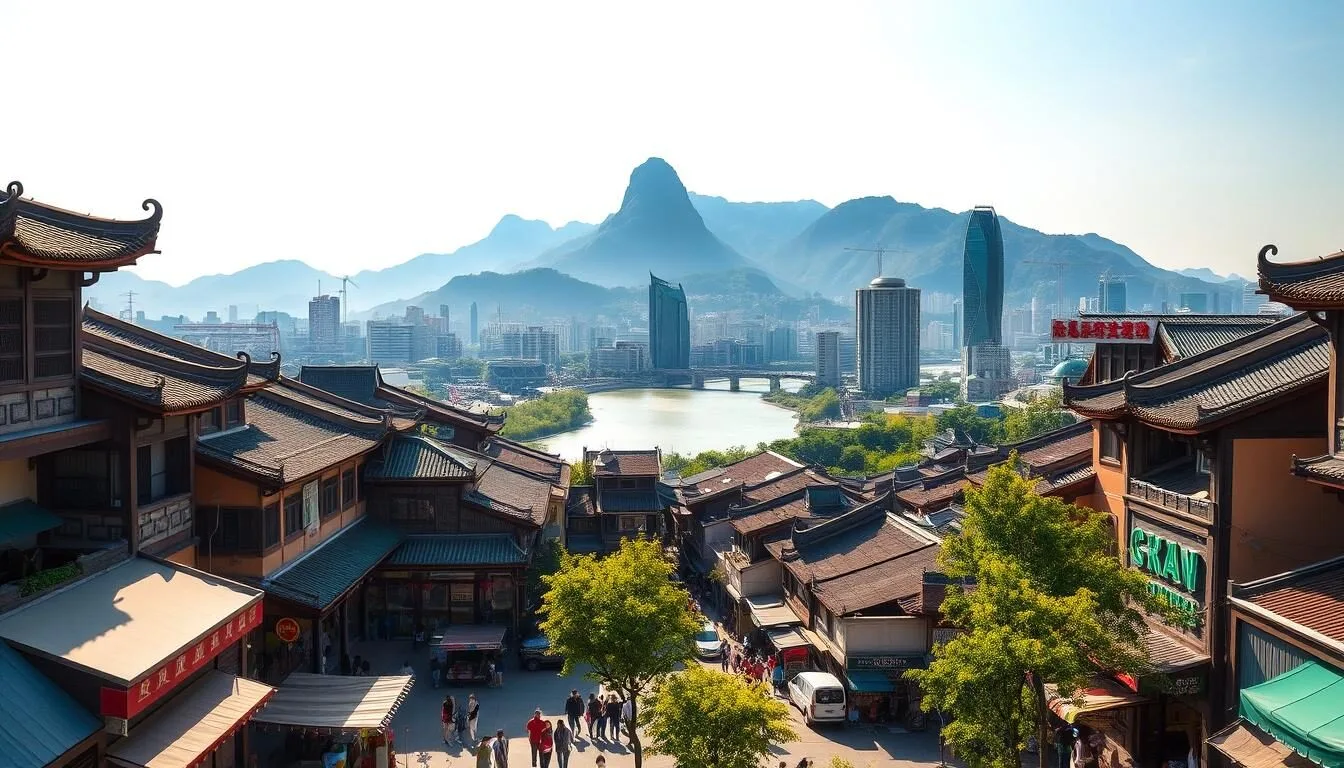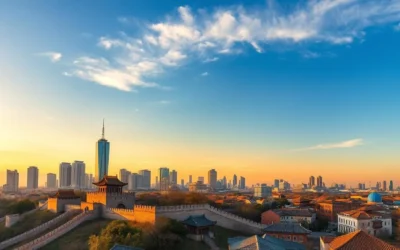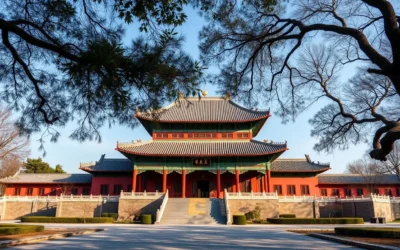✓ Accommodations✓ Flights✓ Rental Cars✓ Tours & Activities
You might be surprised to learn that a city steeped in history and revolution is waiting to be explored. Located in Hunan Province, this vibrant destination is a treasure trove of cultural landmarks, historical sites, and modern attractions.
As you plan your trip to this fascinating city, you’ll uncover its rich heritage, from ancient academies to revolutionary footprints. With a blend of traditional and modern experiences, this city is an ideal gateway to Hunan Province, offering a diverse range of activities and sights that cater to all interests.
This comprehensive guide will take you through the top attractions and hidden gems, ensuring that your visit is both memorable and enriching.
Discovering Changsha: A Historical and Cultural Hub
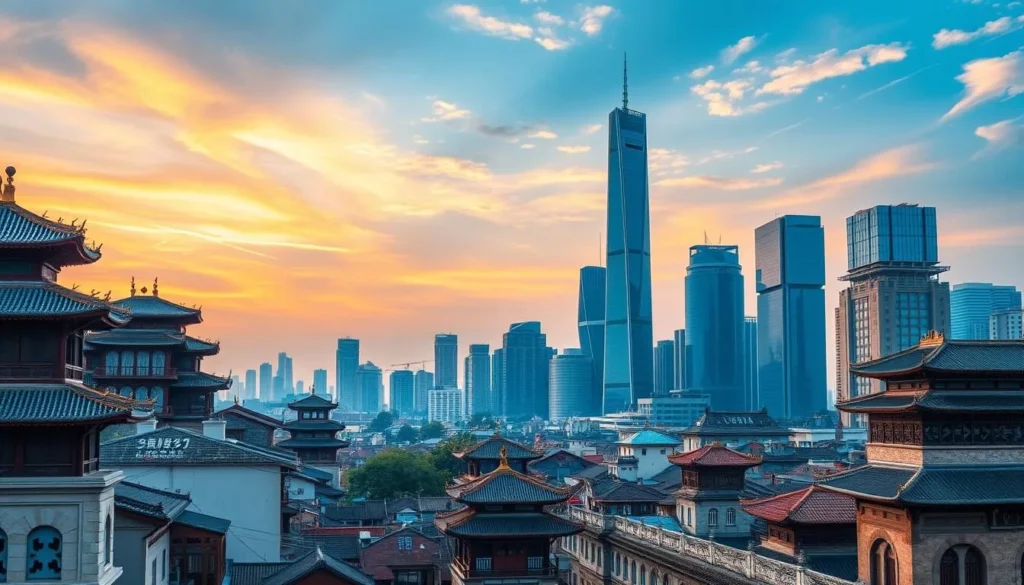
With a rich history spanning over 3,000 years, Changsha is a cultural hub that offers a unique blend of traditional and contemporary experiences. As the capital of Hunan Province, this city seamlessly blends ancient cultural heritage with modern urban development.
Changsha’s significance extends beyond its historical background; it is also an economic hub in central China. The city’s geographical setting along the Xiangjiang River adds to its picturesque landscapes, making it a compelling destination.
The city is connected to important historical figures, including Mao Zedong and Jia Yi, and has transformed while preserving its cultural identity through various historical periods. Today, Changsha is renowned for its education, entertainment, and Hunan cuisine, making it an authentic destination beyond the typical tourist circuit.
Best Time to Visit Changsha
Changsha’s climate and seasonal events play a significant role in determining the best time to visit. The ideal period to explore this city is from late September to May, with autumn being particularly spectacular due to the vibrant foliage.
Seasonal Highlights
Autumn in Changsha is a treat, especially at Yuelu Mountain, where the maple trees turn vibrant red and orange, creating a breathtaking landscape. Spring is another excellent season, with mild temperatures and blooming flowers making it perfect for outdoor activities. Winters are mild, with fewer crowds, making it an excellent time to visit popular attractions.

Weather Considerations
Understanding Changsha’s weather is crucial for planning your trip. Summers are hot and humid, while winters are generally mild. The spring and autumn seasons offer the most comfortable temperatures for exploring the city on foot. Here’s a summary of what to expect:
| Season | Weather | Activities |
|---|---|---|
| Spring | Mild temperatures, blooming flowers | Outdoor activities, visiting attractions |
| Summer | Hot and humid | Indoor activities, water sports |
| Autumn | Comfortable temperatures, vibrant foliage | Hiking, sightseeing |
| Winter | Mild, fewer crowds | Visiting popular attractions, cultural events |
By considering these factors, you can plan your visit to Changsha during the best time that suits your preferences.
How to Get to Changsha
You can easily reach Changsha via international or domestic flights to Huanghua International Airport or by taking a high-speed train. Changsha’s well-connected transportation network makes it accessible from various cities in China and around the world.
International and Domestic Flights
Changsha Huanghua International Airport serves as the primary airport for both international and domestic flights. It connects Changsha to major cities globally and within China, offering a convenient entry point for travelers. Several airlines operate from this airport, providing a range of options for travelers to choose from based on their departure city and preferred airline.
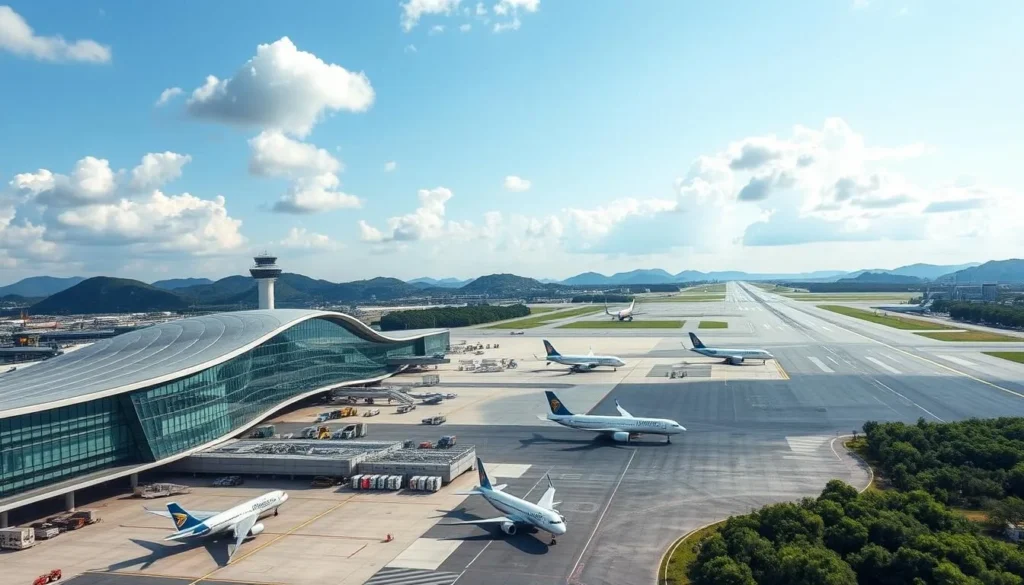
High-Speed Train Connections
Changsha is also well-connected by high-speed trains, making it easily accessible from major Chinese cities like Shanghai, Beijing, and Guangzhou. The travel times are quite reasonable, with journeys from Shanghai taking around 4-7 hours, while trips from Zhangjiajie or Guilin take approximately 2.5-3.5 hours. Upon arrival at Changsha South Railway Station, you can easily get to the city center using the metro or taxi services, making the overall travel experience smooth.
Yuelu Mountain and Academy: A Cultural Landmark
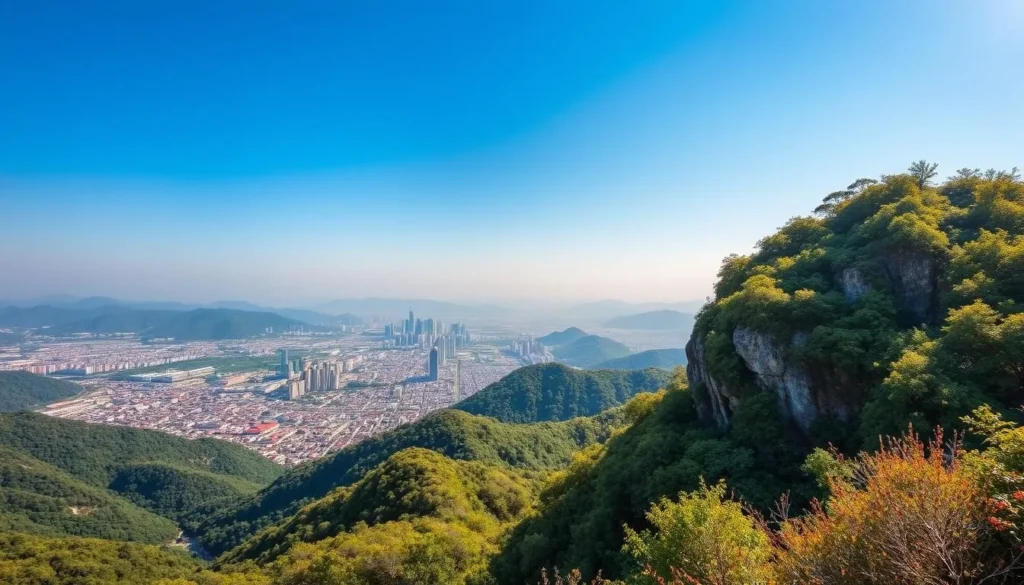
With its rich history and natural beauty, Yuelu Mountain is a cultural gem in Changsha. Standing tall at 300 meters, it offers a panoramic view of the city and the Xiangjiang River, making it a must-visit attraction.
Hiking Yuelu Mountain
Hiking Yuelu Mountain is an experience that combines natural beauty with cultural significance. The mountain is dotted with historic sites, including the famous Aiwan Pavilion, which is particularly stunning during autumn when the maple trees turn vibrant red.
Exploring the Ancient Yuelu Academy
Yuelu Academy, one of China’s four most prestigious ancient academies, is a highlight of any visit to Yuelu Mountain. Founded over 1,000 years ago, it has played a significant role in Chinese intellectual history. Visitors can explore its historical buildings, including Wenchang Pavilion and the Library of Imperial Books.
To fully appreciate the beauty and history of Yuelu Mountain and Yuelu Academy, it’s recommended to allocate at least half a day. The combination of natural scenery, with its lush trees, and cultural landmarks makes for a memorable visit.
Orange Island: Mao’s Inspiration and Scenic Beauty
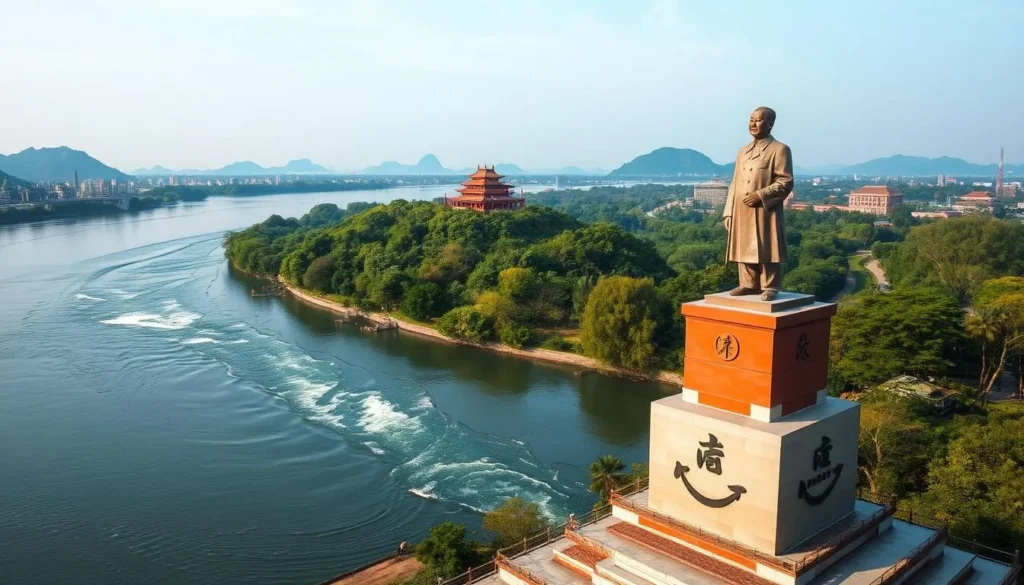
As you step onto Orange Island, you’re immediately immersed in a world where history and nature blend seamlessly together. This iconic sandbar in the middle of the Xiangjiang River, also known as Juzizhou, has been a famous scenic spot in Hunan Province since ancient times.
Strolling Through Orange Isle
Strolling through Orange Isle is a leisurely experience that allows you to appreciate the island’s scenic paths lined with orange trees and beautiful landscapes. The island is not just a natural wonder but also a place of great historical significance, having inspired Mao Zedong to write one of his most famous poems.
Evening Firework Shows
One of the highlights of visiting Orange Island is the spectacular firework shows that take place on Saturday evenings during certain times of the year. For the best views, head to Dufu River Pavilion or Yuelu Mountain Observation Deck, and enjoy the display that lights up the night sky.
Orange Island is a bridge between the past and the present, offering a unique cultural legacy to Xiaoxiang culture. With attractions like the Historical and Cultural Exhibition Hall, Xiaoxiang Celebrity Club, and Citrus Culture Park, you can combine sightseeing, leisure, and entertainment into one unforgettable experience. Visiting in the late afternoon allows you to enjoy both the daytime views and the evening illuminations or fireworks, making the most of your time on this beautiful island.
Hunan Provincial Museum and Mawangdui Han Tombs
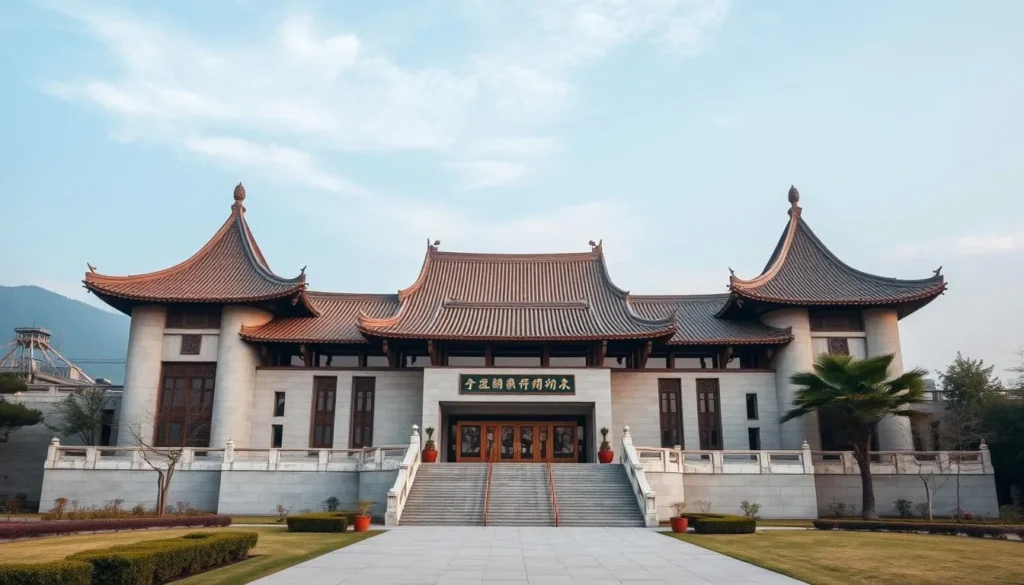
As one of China’s most important museums, the Hunan Provincial Museum houses an impressive array of historical treasures, including those from the Mawangdui Han Tombs. The museum is renowned for its extensive collections that provide insights into the region’s rich history, particularly during the Western Han Dynasty (206 BC-24 AD).
Ancient Artifacts and Historical Treasures
The Hunan Provincial Museum boasts an impressive collection of artifacts excavated from the Mawangdui Han Tombs, including delicate silk paintings, lacquerware, and bamboo manuscripts. These artifacts offer a unique glimpse into the lives of the people during the Han Dynasty, showcasing the advanced craftsmanship and cultural practices of the time.
The Well-Preserved Mummy of Lady Dai
One of the museum’s most famous exhibits is the incredibly well-preserved 2,000-year-old mummy of Lady Dai (Xin Zhui). Discovered in the Mawangdui Han Tombs, Lady Dai’s mummy is an extraordinary archaeological find that has provided valuable insights into the burial practices and daily life of the nobility during the Western Han Dynasty. The museum’s modern exhibition techniques help visitors understand the historical context of this ancient treasure.
To fully appreciate the museum’s extensive collections, it is recommended to allocate at least 2-3 hours for your visit. The Hunan Provincial Museum is open throughout the week, and guided tours are available to enhance your understanding of the exhibits. Be sure to check the museum’s opening hours and photography policies before your visit.
Taiping Street: A Journey Through Ancient Changsha
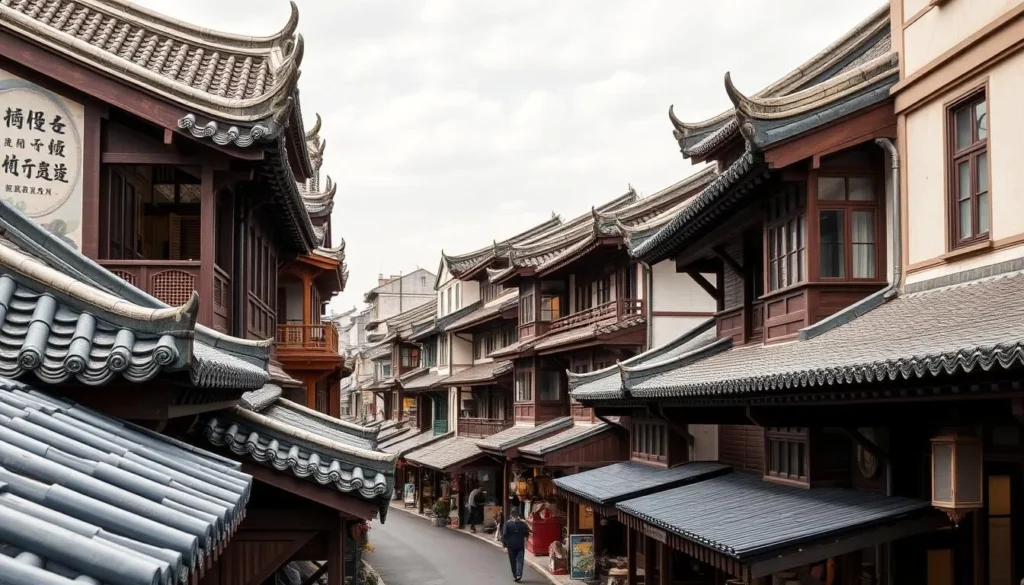
Step into Taiping Street, and you’ll be transported to ancient Changsha. This well-preserved ancient town offers a unique glimpse into the city’s rich history, with its original street pattern remaining unchanged for over 200 years.
Historical Architecture and Ambiance
The street is characterized by its traditional blue-tiled roofs and wooden structures, creating an ambiance that is quintessentially Chinese. As you walk through this historical area, you’ll notice the intricate details of the architecture and the cultural significance of the various landmarks.
The Former Residence of Jia Yi
One of the notable attractions on Taiping Street is the Former Residence of Jia Yi, a famous Han Dynasty scholar and writer who lived in Changsha. This historical site provides insight into the life and works of Jia Yi, and is a must-visit place for anyone interested in Chinese history and culture.
Following Mao Zedong’s Footsteps in Changsha
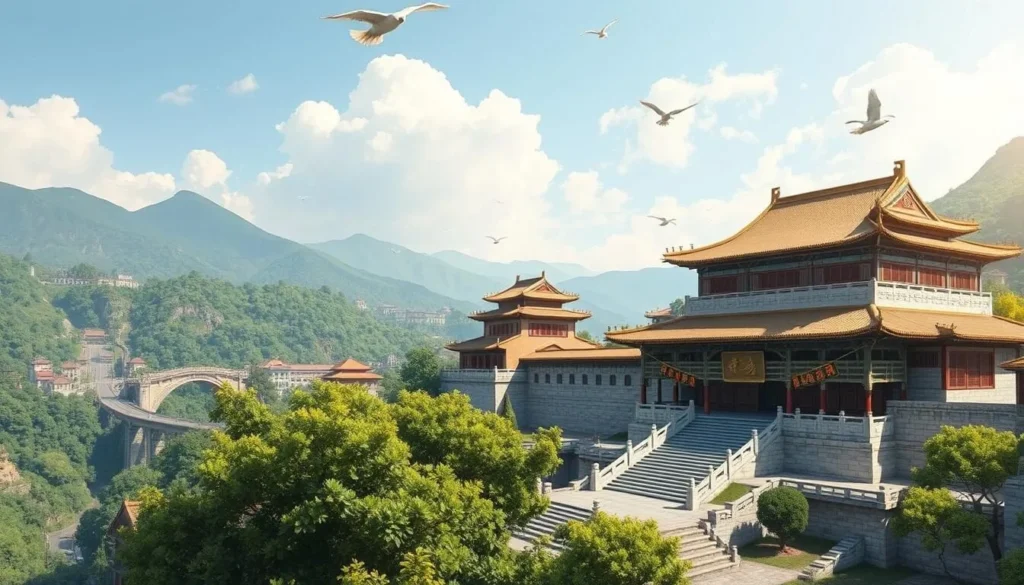
For those fascinated by the life and legacy of Mao Zedong, Changsha offers a unique opportunity to walk in his footsteps. The city’s connection to Mao is profound, with several locations that played a significant role in his life.
Shaoshan: Mao’s Birthplace
Shaoshan, located about 100km from Changsha, is the birthplace of Mao Zedong. This site has become a pilgrimage destination for those interested in Mao’s life and legacy. Key attractions include Mao Zedong’s Former Residence, the Mao Zedong Exhibition Hall, and the Mao Ancestral Temple. Visitors can travel to Shaoshan by train or join an organized tour.
Hunan First Normal University
A significant location in Changsha is the Hunan First Normal University, where Mao studied from 1913 to 1918. This period was crucial in shaping his political ideas. The university’s preserved campus buildings and exhibits related to Mao’s time as a student offer a glimpse into his formative years.
To follow Mao’s footsteps, consider visiting these sites and exploring the surrounding areas. An itinerary that includes Shaoshan and Hunan First Normal University will provide a comprehensive understanding of Mao’s connection to Changsha.
Changsha, China: Best Things to Do – Top Picks for Food Lovers
Changsha, the heart of Hunan cuisine, offers a culinary adventure like no other. As the center of Hunan cuisine, Changsha is a national famous food city, offering a wide range of delicious dishes and snacks to explore.
Must-Try Hunan Cuisine Dishes
Hunan cuisine is known for its bold flavors and liberal use of chili peppers. The signature characteristics of Hunan food include being spicy, sour, aromatic, and fresh. Some must-try local specialties include stinky tofu, a Changsha favorite, steamed fish head with diced hot peppers, and Mao’s family-style braised pork.
Other dishes worth trying are flavored shrimp, sweet paste fried in sugar oil, and fried slice streaky pork with chili. These dishes showcase the rich culinary heritage of Changsha.
Best Food Streets and Restaurants
Changsha is home to several famous food streets and restaurants that are a must-visit for any food lover. Huogongdian is a renowned food destination offering over 300 types of traditional Changsha snacks.
Huogongdian
At Huogongdian, you can try a variety of local snacks such as stinky tofu, sugar and oil baba, taro with beef, and beef noodles. It’s a great place to experience the authentic flavors of Changsha.
Pozi Street Food Scene
Pozi Street is another culinary hotspot, home to many time-honored restaurants serving authentic local cuisine. Restaurants like Ruxiangqun, Lihesheng, and Xuchangxing offer a range of traditional dishes.
Huangxing Pedestrian Street
Huangxing Pedestrian Street is a modern shopping area that also offers a variety of traditional and contemporary dining options. It’s a great place to explore and enjoy the local food scene.
| Restaurant/Street | Must-Try Dish | Description |
|---|---|---|
| Huogongdian | Stinky Tofu | A fermented tofu dish with a strong flavor, often served fried. |
| Pozi Street | Braised Pork | A traditional Hunan dish made with pork belly, often served with steamed rice. |
| Huangxing Pedestrian Street | Flavored Shrimp | Fresh shrimp cooked in a variety of flavors, often spicy and aromatic. |
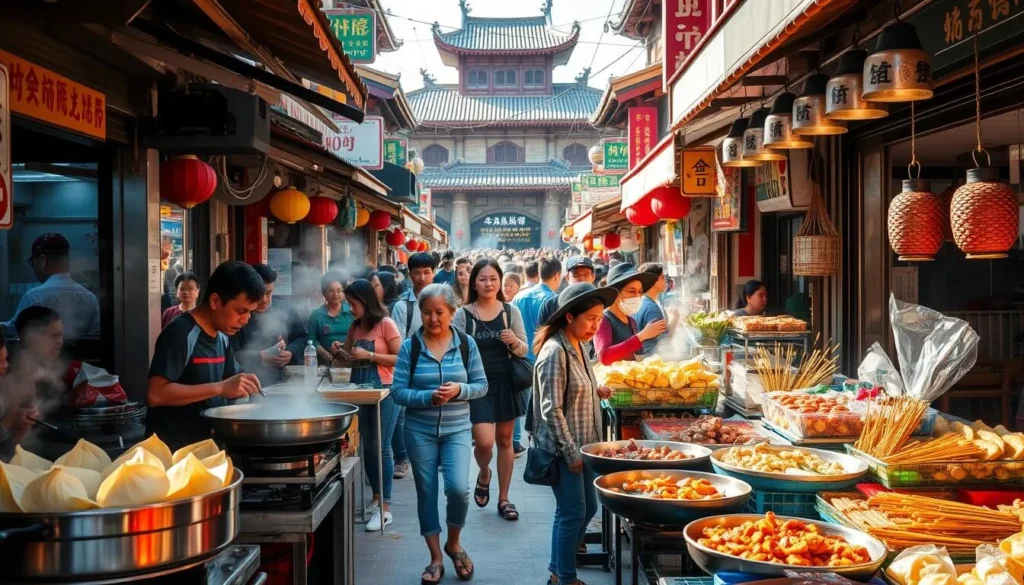
When exploring these food streets and restaurants, don’t hesitate to try new dishes and ask for recommendations from locals. Enjoying the culinary delights of Changsha is a significant part of the travel experience.
Tianxin Pavilion: Witness to 2,000 Years of History
Perched atop Longfu Mountain, Tianxin Pavilion is a historical gem that has witnessed the evolution of Changsha over 2,000 years. This ancient tower, originally built at the end of the Ming Dynasty and rebuilt during the Qianlong Reign of the Qing Dynasty, is a testament to the city’s rich cultural heritage.
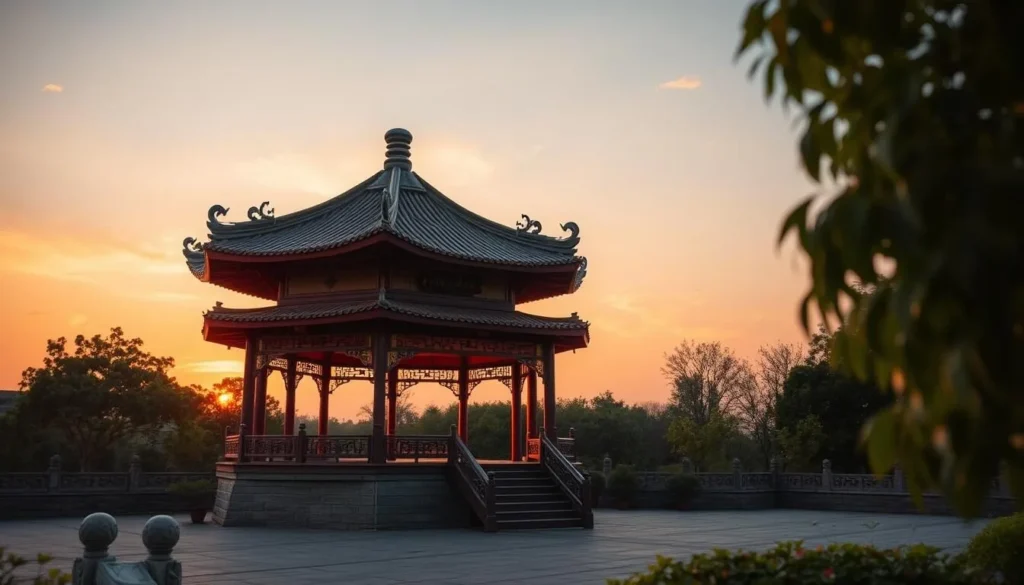
Ancient City Walls and Historical Significance
The pavilion is surrounded by remnants of the ancient city walls, the only physical remains of old Changsha. These walls hold significant historical value, providing insights into the city’s past.
Panoramic Views of Modern Changsha
From the top of Tianxin Pavilion, visitors can enjoy panoramic views of modern Changsha, contrasting sharply with the ancient architecture below. It’s an ideal spot to appreciate the city’s blend of old and new.
As you spend a few hours exploring Tianxin Pavilion, you’ll discover its original purpose as an astronomical observation point, connected to the “Changsha star.” The site is also home to historical artifacts, including bronze spears and iron cannons, and has been a place where people traditionally prayed for good fortune.
Museums Worth Visiting in Changsha
Beyond the famous Hunan Provincial Museum, Changsha has a vibrant museum scene worth exploring. The city is home to several museums that offer a deep dive into its history, culture, and art.
Changsha Museum
The Changsha Museum, located in Kaifu District, boasts an impressive collection of over 50,000 artifacts spanning from the Old Stone Age to modern times. Its cultural treasures include bronzes from the Shang and Zhou dynasties, relics from the Chu and Han dynasties, and porcelain from the Tang Dynasty.
Hunan Embroidery Museum
The Hunan Embroidery Museum showcases the traditional art of Xiang embroidery, one of China’s four famous embroidery styles. With over 1,200 pieces, the museum features three exhibition halls that trace the history and evolution of Hunan embroidery.
Changsha Bamboo Slips Museum
The Changsha Bamboo Slips Museum houses a remarkable collection of ancient written documents, including over 140,000 bamboo slips from the Three Kingdoms period and 20,000 from the Western Han Dynasty. This museum is a must-visit for history enthusiasts.
| Museum | Key Exhibits |
|---|---|
| Changsha Museum | Bronzes from Shang and Zhou dynasties, porcelain from Tang Dynasty |
| Hunan Embroidery Museum | Historical and contemporary Hunan embroidery pieces |
| Changsha Bamboo Slips Museum | Bamboo slips from Three Kingdoms period and Western Han Dynasty |
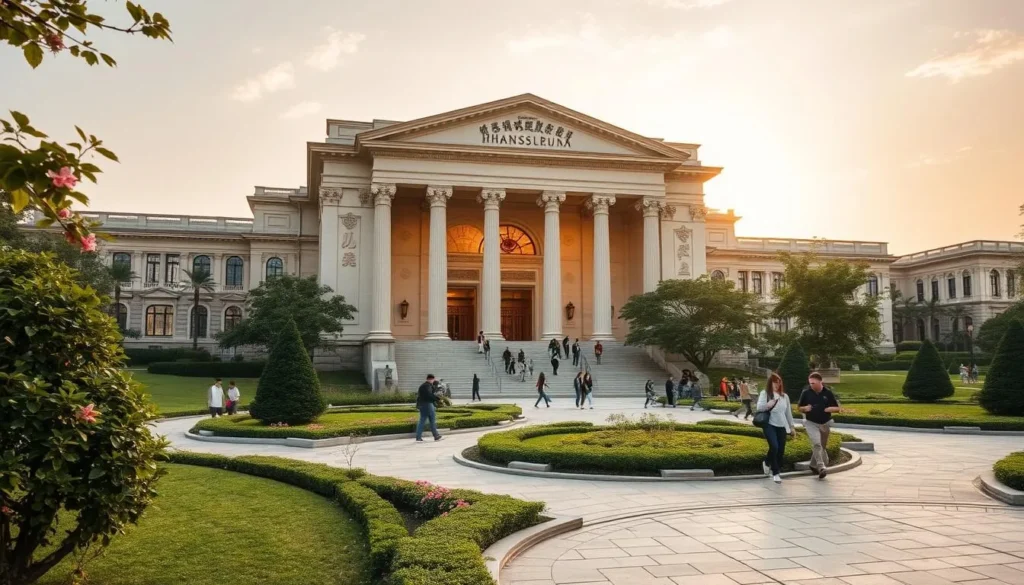
Family-Friendly Attractions in Changsha
Changsha, the capital city of Hunan Province, is a surprisingly family-friendly destination that offers a variety of attractions and activities for visitors of all ages. You can spend a fun-filled day at theme parks, explore interactive museums, or enjoy the city’s many parks and outdoor recreation areas.
Changsha Windows of the World
Covering an area of 400,000 square meters, Changsha Windows of the World is a theme park that features miniature replicas of famous global landmarks. You can enjoy roller coasters, the Sky Tower, and cultural performances, making it an ideal place for families to visit.
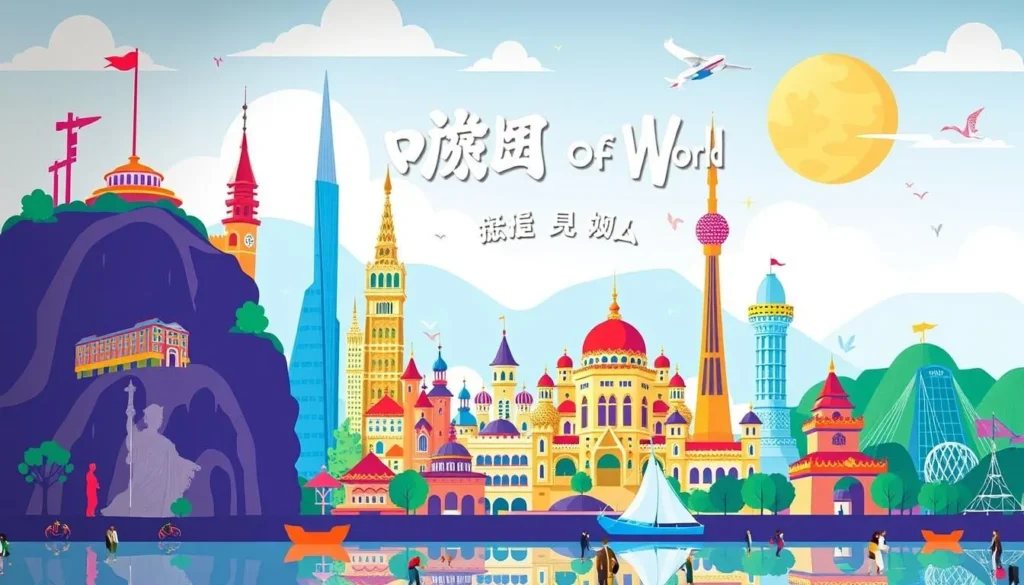
Changsha Sea World
Located right next to Changsha Windows of the World, Changsha Sea World is a great place for children to learn about marine life. You can watch seal shows, explore the underwater world, and get up close with various marine animals.

In addition to these attractions, Changsha offers many other family-friendly activities, including parks, interactive museums, and outdoor recreation areas. You can enjoy a picnic in one of the city’s many parks or explore the city’s many outdoor activities, such as hiking and biking.
Photography Spots: Capturing Changsha’s Beauty
Changsha is a city of contrasts, offering photographers a diverse range of shooting opportunities. From abandoned industrial sites to serene natural landscapes, you’ll find plenty of subjects to capture.
Yuxiang Spinning Mills Factory
The abandoned Yuxiang Spinning Mills Factory is a unique photography hotspot. Its impressive gateway tower, connected to two old Western-style buildings, creates a striking backdrop. The area is relatively empty, making it ideal for taking photos without distractions. At night, the site transforms into a dazzling, castle-like palace.
Xiangjiang River Views
The Xiangjiang River offers breathtaking views, especially during sunset when the city skyline reflects on the water. You can also capture panoramic cityscapes from vantage points on Yuelu Mountain. Additionally, Orange Island is a great spot to photograph the famous statue of young Mao Zedong against natural backgrounds, surrounded by trees and scenic views.
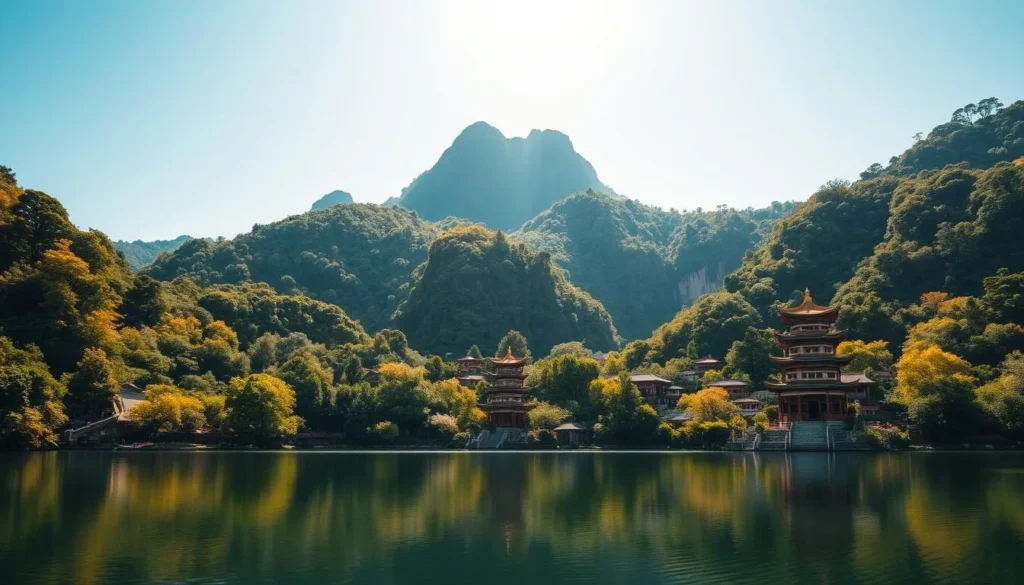
Practical Tips for Your Changsha Visit
To make the most of your trip to Changsha, consider these practical tips. Changsha is a city that seamlessly blends historical significance with modern attractions, making it an exciting destination for travelers.
Transportation Around the City
Navigating Changsha is relatively straightforward thanks to its efficient public transportation system. The metro network, with its multiple lines, connects major attractions and transportation hubs, making it convenient to get around. You can also use the bus system, aided by navigation apps, to reach various parts of the city. For shorter distances or a more direct route, taxis and ride-sharing services are readily available, with costs starting from around ¥10 (approximately $1.40 USD) for a short ride.
| Transport Mode | Convenience | Cost |
|---|---|---|
| Metro | High | ¥2-¥6 ($0.28-$0.85 USD) |
| Bus | Medium | ¥1-¥2 ($0.14-$0.28 USD) |
| Taxi/Ride-sharing | High | Starting from ¥10 ($1.40 USD) |
Accommodation Recommendations
Changsha offers a wide range of accommodation options to suit different budgets. For luxury travelers, hotels like the InterContinental Changsha offer top-notch amenities. Mid-range options such as Jinjiang Inn provide comfortable stays at reasonable prices. Budget travelers can opt for hostels or guesthouses, which are not only affordable but also great for meeting fellow travelers. When choosing where to stay, consider the area: downtown for shopping and dining, near Yuelu Mountain for scenic views, or near transportation hubs for convenience.
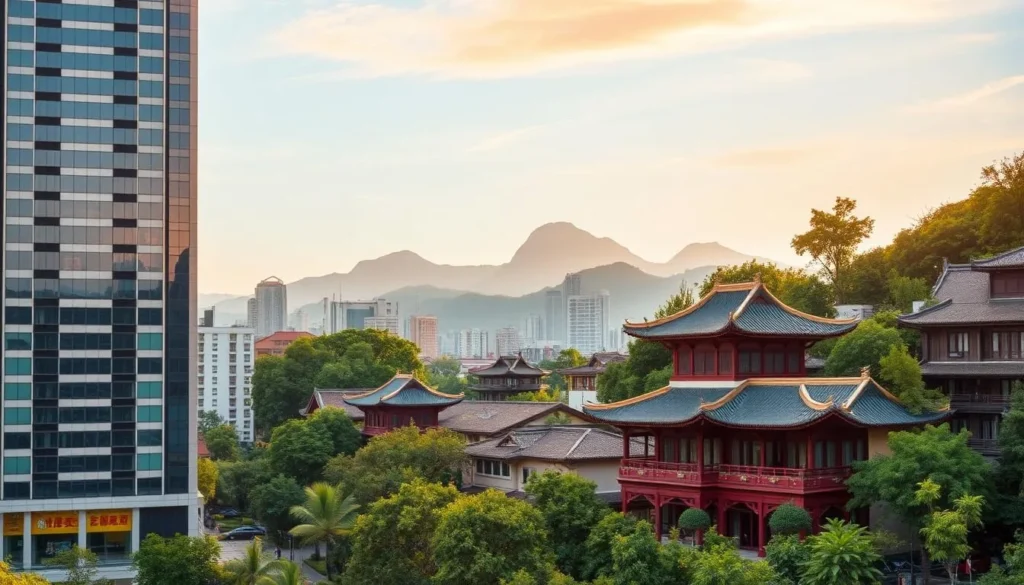
For an ideal visit, plan to spend 2-3 days in Changsha to explore its major attractions without rushing. Additionally, be prepared with some basic Chinese phrases, have local currency for small purchases, and ensure your phone is compatible with local internet services.
Conclusion: Why Changsha Deserves a Spot on Your China Itinerary
Discover the charm of Changsha, a city that seamlessly blends tradition and modernity. As the capital of China’s Hunan Province, Changsha offers a unique blend of historical sites like Yuelu Academy and the Hunan Provincial Museum, alongside modern attractions that showcase its vibrant culture.
Visitors can explore the natural beauty of Yuelu Mountain and Orange Island, enjoy the local cuisine famous for its spicy dishes, including the renowned Hunan pork. With 2-4 days in Changsha, you can experience the city’s rich history, cultural significance, and its role as a gateway to other Hunan Province destinations like Zhangjiajie. Make Changsha your home away from home in China and experience the warmth of its people.
Changsha is an ideal destination for travelers seeking an authentic Chinese experience beyond the typical tourist trail. With its perfect balance of historical and modern attractions, Changsha deserves a spot on your China itinerary.
The above is subject to change.
Check back often to TRAVEL.COM for the latest travel tips and deals.
